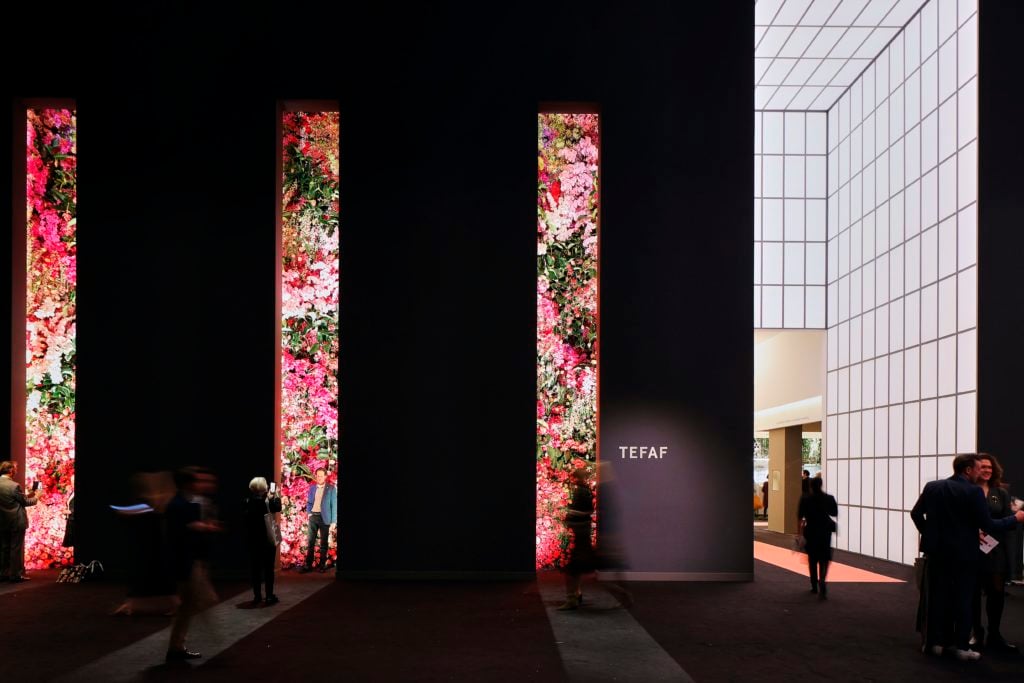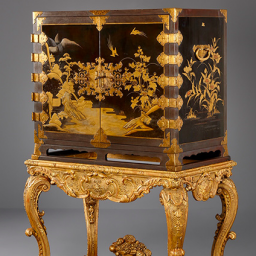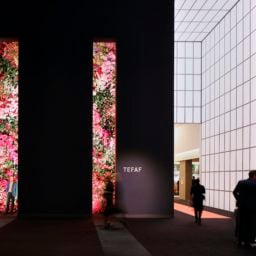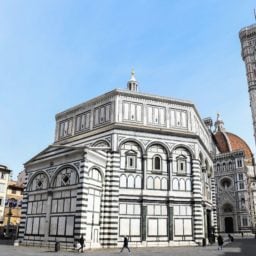Call it the TEFAF tap.
Instead of shaking hands at this year’s edition of the European Fine Art Fair, some people—just a few, admittedly—were literally rubbing elbows to avoid even the possibility of transmitting the coronavirus during the event’s opening hours.
Yet despite a few jokes to lighten the mood, the annual fair in Maastricht opened to thinner crowds than usual on its highly anticipated VIP preview day, March 5.
“It’s not that it’s empty. There are people here,” one dealer was overheard complaining on his cell phone. “It just doesn’t feel like opening day.”
But as the day went on, attendance grew steadily.
“It looked very different at 11 a.m.” when the door opened, TEFAF chairman Nanne Dekking conceded in an interview with Artnet News. “It was very quiet.” But he and dealers were happy to see that change over the course of the next few hours.
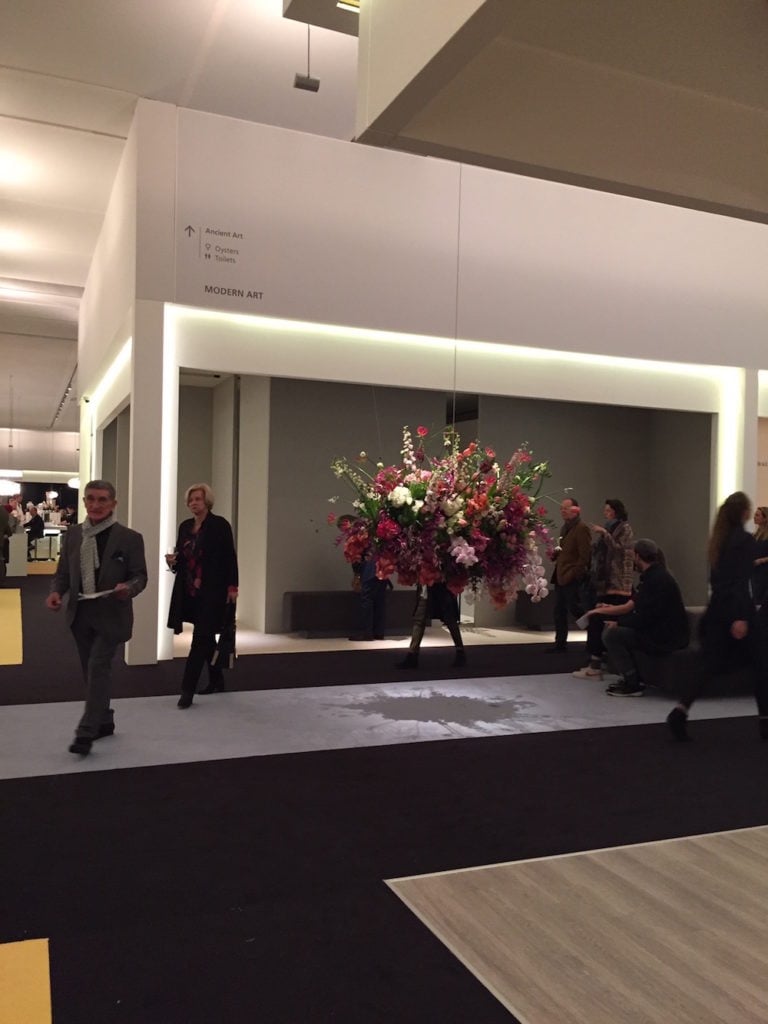
The TEFAF booth reserved for New York dealer Fergus McCaffrey, one of three exhibitors who withdrew from the fair. Photo by Eileen Kinsella
Taking Precautionary Measures
A representative said 4,000 people attended the opening preview—a decrease of more than 27 percent from the 5,500 who came last year. But considering the circumstances, perhaps it’s not such a huge drop.
Along with an abundance of wine and canapés—and the famous oyster shuckers who rove the aisles—there were plenty of vials of hand sanitizer and posted signs outside the exhibition venue with information about COVID precautions.
On Monday, March 1, the fair said it had received confirmation from local and national authorities that the event could “responsibly go ahead.” Representatives said they were taking “extra precautionary measures,” such as adding “all-day cleaning services” to the event. BMW drivers ferrying VIPs to and from the fair were also doing twice daily car cleanings, a driver told Artnet News.
Still, three galleries—admittedly a tiny component of the sizeable group of 285 exhibitors—ultimately withdrew from the show. These included one Paris exhibitor, Galerie Monbrison, and two New York dealers, Wildenstein & Co. and Fergus McCaffrey.
The withdrawals happened late enough that their names still appeared on the fair’s floor plans, and their booths were enclosed by blank walls with benches placed out in front.
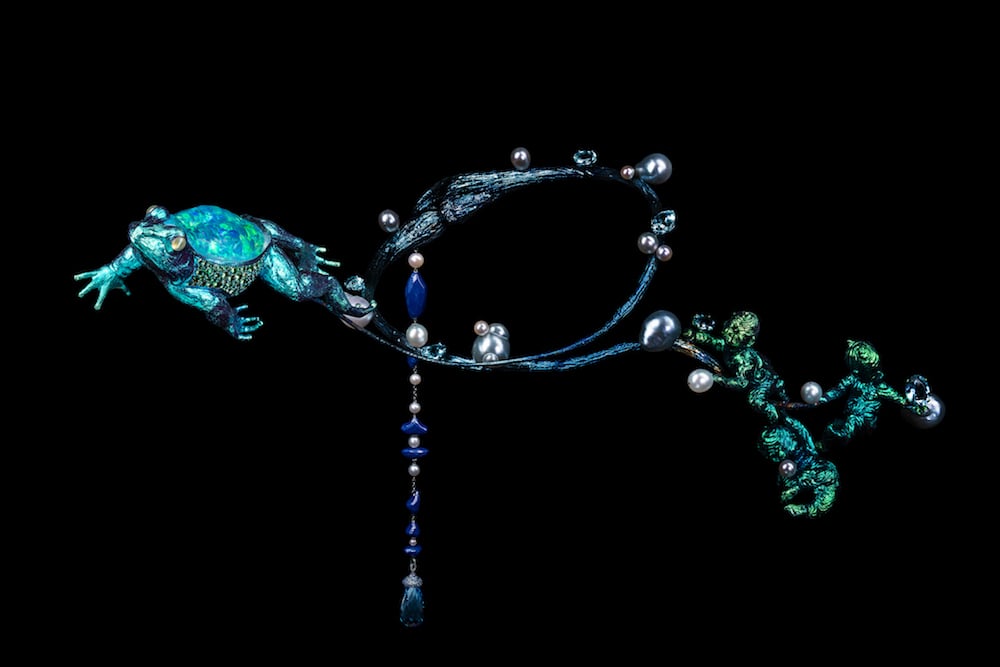
Wallace Chan, Flying Frog necklace (2019). Image courtesy Wallace Chan.
Handsomely Appointed Booths
But overall—and as much as was possible considering the situation—it was business as usual, with stunning displays of Old Master paintings, works from antiquity, and examples of modern and contemporary art, design, and jewelry.
Booths, as usual, were often thoughtfully customized. The London specialty jeweler Didier Ltd., for example, presented a booth titled “The Jeweler’s Guide to the Galaxy: 42 Years of Atomic and Space Age Jewelry,” surveying items made between 1945 and 1987 in handsomely designed domes. The exhibition highlighted unique works by Louise Nevelson that looked like miniature versions of her signature chunky black artworks.
And Belgian dealer Axel Vervoordt pulled out the stops with a buzzed-about booth sporting a custom-designed wood floor. The items in the stand ranged from an ancient stone wall-hung relief, to a chaise lounge made of bricks by Per Kirkeby, presented alongside a painting by Gutai artist Kazuo Shiraga. As usual, the dealer made his display of widely ranging works appear seamlessly beautiful.
Other highlights of this year’s edition include an early Van Gogh painting at Dickinson, Peasant Woman in Front of a Farmhouse, from 1885. The work was rediscovered at an antique shop in Hampstead, England, in 1968, where it was acquired for £45 and subsequently authenticated as a signature work by the artist.
And London’s Weiss Gallery was showing Venus and Cupid with Mercury and Psyche—An Allegory (circa 1600), a newly discovered oil-on-canvas picture by Bartholomeus Spranger thought to have been an imperial commission for Rudolf II, Holy Roman Emperor from 1552 to 1612.
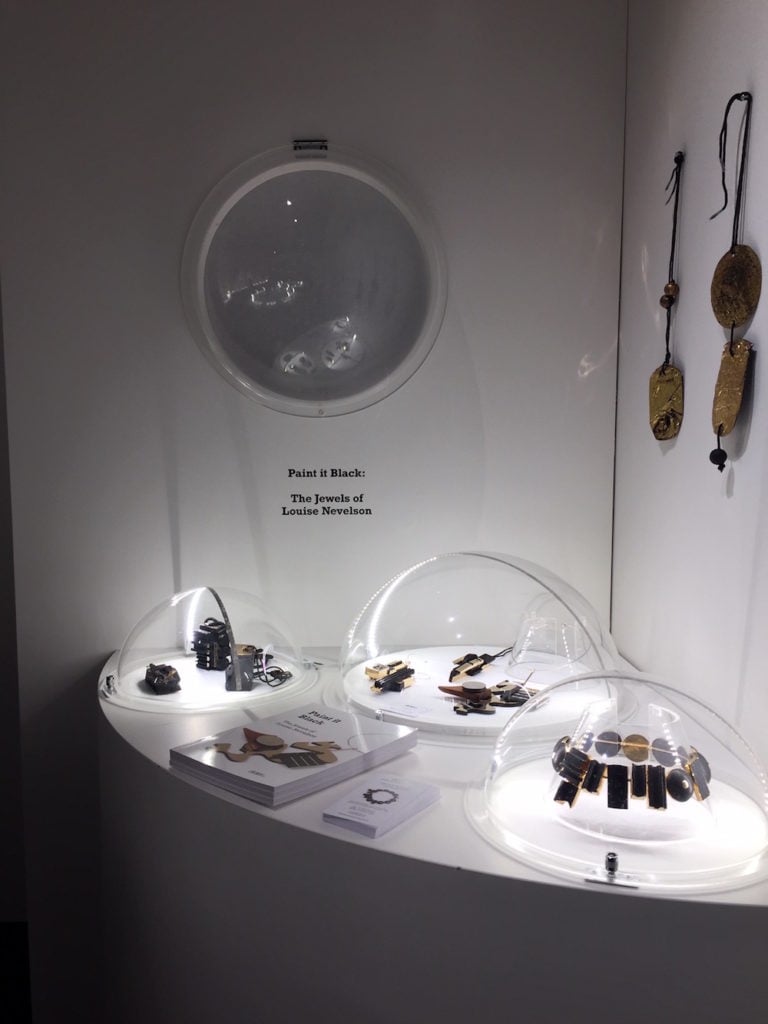
“Paint It Black: The Jewels of Louise Nevelson” at Didier Ltd. Photo by Eileen Kinsella
And the Sales Roll in…
And collectors, in the end, did come to buy.
“The people who came are very committed,” Dekking said, adding they didn’t come just “to have a glass of champagne.”
Early sales reports, while not as robust as in previous years, appeared to confirm this. London’s Thomas Gibson Fine Art sold a two-sided Alberto Giacometti drawing, Tete (1964–65), with an asking price of $185,000.
Tomasso Brothers Fine Art reported three six-figure sales from their eye-catching booth, which included a Northern Italian bronze from the first quarter of the 16th century, priced in the range of €950,000 ($1.06 million); a 17th-century Italian Bust of a Moor, which had an asking price of €375,000 ($419,000); and a circa 1720 French bronze for about €175,000 ($195,000). In the works on paper section, British dealer James Butterwick sold a 1916 self portrait by Alexander Bogomazov to Holland’s Kröller-Müller Museum, for an undisclosed price.
Of course, there were some difficulties.
Cherry Rao, a representative for bespoke jewelry designer Wallace Chan, who is based in Hong Kong, told Artnet News it was a challenge preparing for the fair due to the situation back home.
Chan’s elaborate Flying Frog necklace, which had been on display for the past year at Naturama, the natural history museum in Svendborg, Denmark, was among the fantastical jewels in the dealer’s elaborately staged and lit booth.
But by the second day of the event, Rao said: “We have been really pleased with the turn out at Wallace Chan’s booth so far this year, despite initial concerns over coronavirus.
